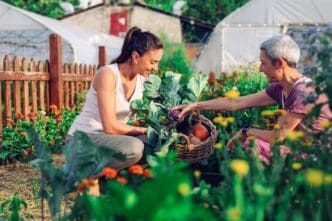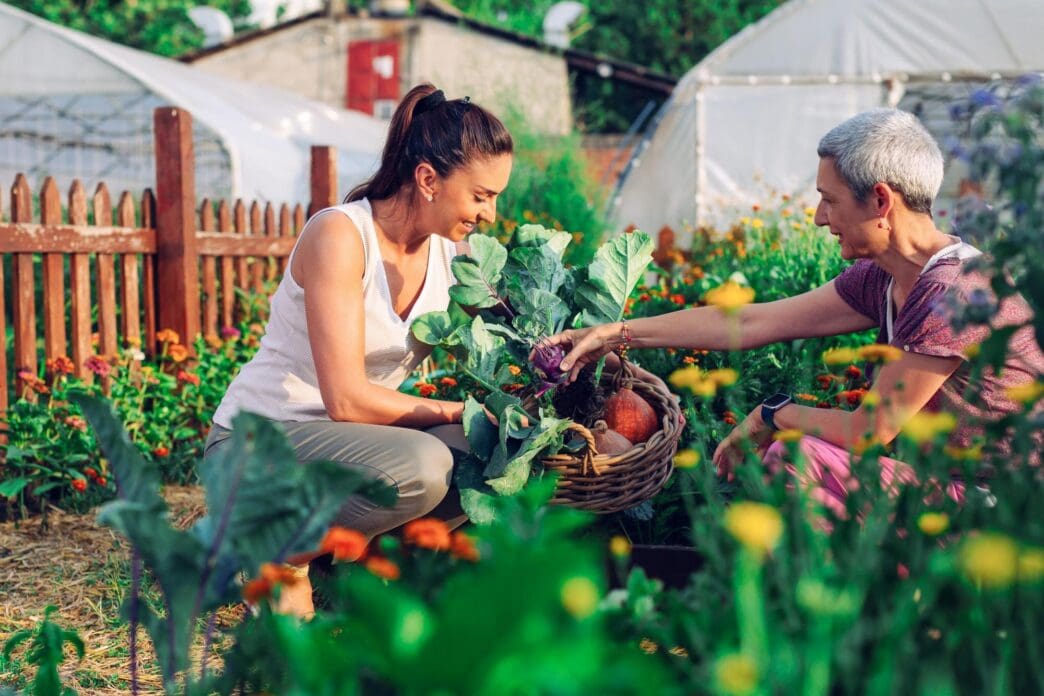A Quick Takeaway
The Story Behind the Trend
How to Make It Work for You
The Community View
Community gardens are emerging as vibrant epicenters of well-being, offering a powerful antidote to modern stressors by cultivating not just plants, but also profound health and happiness. These shared green spaces, typically found in urban and suburban areas on vacant lots, rooftops, or dedicated parkland, empower individuals and diverse communities to grow their own food and flowers, fostering a hands-on connection with nature. They provide an accessible platform for enhancing physical activity, improving nutritional intake, and significantly boosting mental and social well-being, proving that the simple act of digging in the dirt can yield an abundance of benefits for everyone involved.
Cultivating Physical Health
Engaging in a community garden offers a myriad of physical health advantages, from increasing daily activity levels to providing direct access to nutrient-rich food. The very act of gardening is a form of moderate exercise, involving tasks like digging, planting, weeding, and harvesting that engage various muscle groups and improve cardiovascular health.
Improved Nutrition and Food Security
One of the most immediate benefits of community gardening is enhanced access to fresh, organic, and often culturally relevant produce. Gardeners can grow a wide variety of fruits, vegetables, and herbs, ensuring a consistent supply of nutritious food that might otherwise be expensive or unavailable in food deserts. This direct pipeline to healthy eating significantly improves dietary quality for participants and their families.
Beyond personal consumption, many community gardens donate surplus produce to local food banks or share it among members, contributing to broader food security initiatives. This collective effort not only nourishes individuals but also strengthens the community’s overall resilience against food insecurity.
Increased Physical Activity
Gardening provides a natural and enjoyable way to stay active, regardless of age or fitness level. The regular movements involved—bending, stretching, lifting, and walking—contribute to improved strength, flexibility, and endurance. Unlike structured exercise, gardening often feels less like a chore and more like a fulfilling hobby, encouraging consistent engagement.
Regular participation in gardening activities helps to combat sedentary lifestyles, which are linked to various chronic diseases. It’s an accessible form of physical activity that can be adapted to individual capabilities, making it a sustainable choice for long-term health management.
Nourishing Mental and Emotional Well-being
Beyond the physical, community gardens serve as powerful havens for mental and emotional rejuvenation. The therapeutic qualities of nature and the sense of accomplishment derived from nurturing life contribute significantly to psychological health.
Stress Reduction and Mindfulness
Spending time in a garden environment has been scientifically linked to reduced levels of cortisol, the body’s primary stress hormone. The act of tending to plants encourages mindfulness, drawing attention away from daily worries and focusing it on the present moment, the textures of soil, and the growth of green shoots. This meditative quality helps to calm the nervous system and promote a sense of inner peace.
The sensory experience of gardening—the earthy smells, the vibrant colors, the feel of soil in one’s hands—acts as a natural mood enhancer. It provides a much-needed escape from the concrete jungle, offering a quiet sanctuary for reflection and relaxation.
Sense of Purpose and Achievement
Watching seeds sprout and mature into edible produce or beautiful flowers instills a profound sense of purpose and accomplishment. This tangible reward for effort can boost self-esteem and provide a positive outlet for creativity and nurturing instincts. For many, especially those facing unemployment or social isolation, gardening offers a meaningful role and a reason to engage with the world.
Overcoming challenges like pests or adverse weather conditions also builds resilience and problem-solving skills. Each successful harvest reinforces a gardener’s capabilities, fostering a positive self-image and a sense of mastery.
Fostering Social Connection and Community Building
Perhaps one of the most remarkable aspects of community gardens is their innate ability to weave stronger social fabric. They are natural gathering places that break down barriers and build bridges between diverse individuals.
Building Social Bonds and Reducing Isolation
Community gardens inherently promote interaction and cooperation among participants. Sharing tools, exchanging gardening tips, and working together on communal tasks create opportunities for conversation and the formation of new friendships. This shared endeavor helps to combat loneliness and social isolation, particularly in urban settings where anonymity can be prevalent.
These spaces often become intergenerational hubs, where seniors can share their wisdom with younger gardeners, and children can learn from adults. This cross-pollination of knowledge and experience enriches everyone involved, fostering a sense of belonging and mutual support.
Enhancing Community Resilience
By bringing people together around a common, productive goal, community gardens strengthen neighborhood ties and foster a collective sense of ownership and pride. They can act as catalysts for broader community engagement, inspiring residents to collaborate on other local initiatives. This enhanced social cohesion makes communities more resilient in the face of challenges.
These gardens often become vibrant cultural centers, hosting potlucks, workshops, and celebrations that reflect the diversity of their members. This exchange of traditions and knowledge further enriches the community’s cultural landscape.
Sustainable Living and Environmental Stewardship
Beyond the direct human benefits, community gardens play a crucial role in promoting environmental sustainability and greening our urban landscapes.
Greening Urban Spaces
Transforming neglected plots into flourishing gardens improves local air quality, reduces the urban heat island effect by providing more green cover, and supports local biodiversity. These green oases provide habitat for pollinators like bees and butterflies, contributing to healthier local ecosystems.
By increasing permeable surfaces, gardens also help manage stormwater runoff, reducing the burden on municipal drainage systems and preventing localized flooding. They are vital components of sustainable urban planning.
Promoting Sustainable Practices
Community gardens often champion organic gardening methods, minimizing the use of synthetic pesticides and fertilizers. They encourage composting, water conservation, and the use of native plant species, educating participants on environmentally friendly practices that can be applied at home.
Growing food locally reduces the carbon footprint associated with long-distance transportation of produce. This commitment to local, sustainable food systems helps to create a more environmentally conscious and resilient community.
A Harvest of Holistic Well-being
In essence, community gardens are far more than just plots of land for growing food; they are powerful catalysts for holistic well-being. They intricately weave together physical activity, mental tranquility, social connection, and environmental responsibility into a single, accessible, and deeply rewarding experience. By nurturing these green spaces, we are not only cultivating fresh produce but also sowing the seeds for healthier, happier, and more connected communities, one garden bed at a time.







